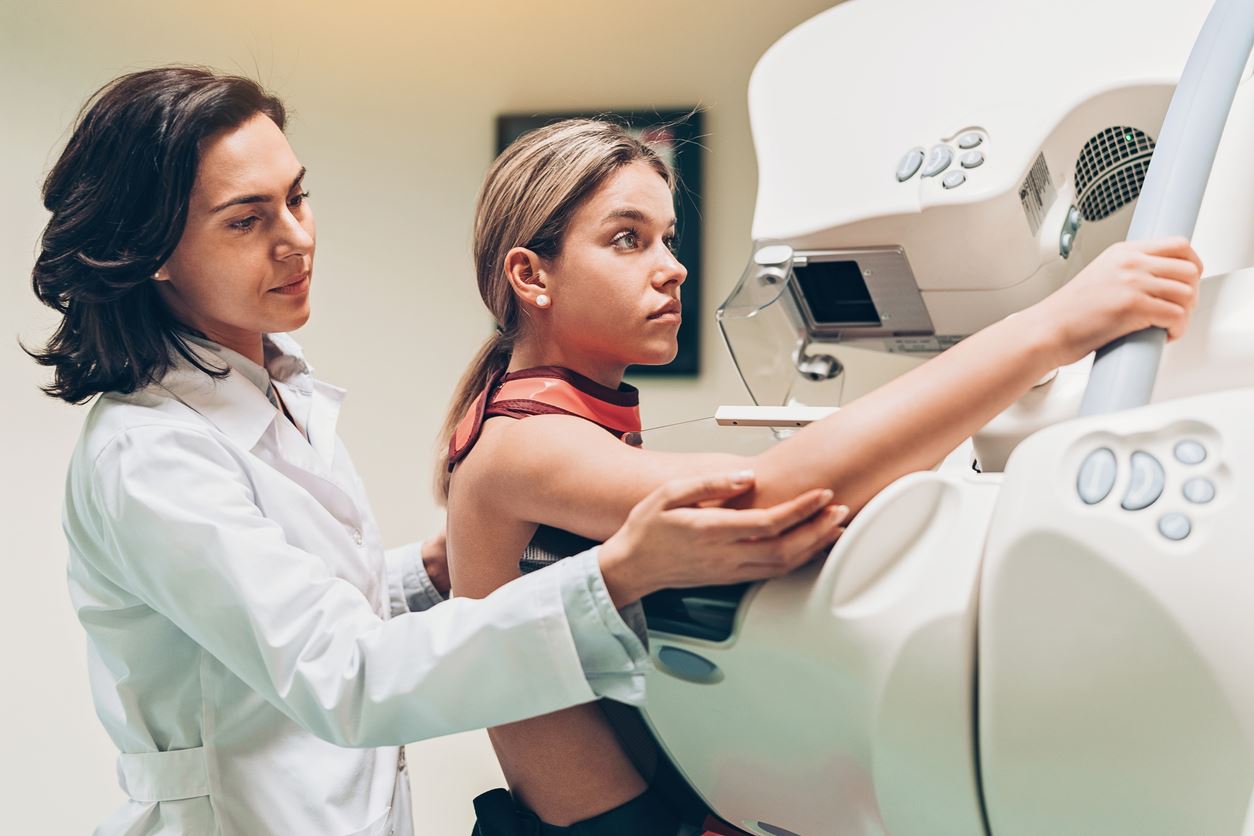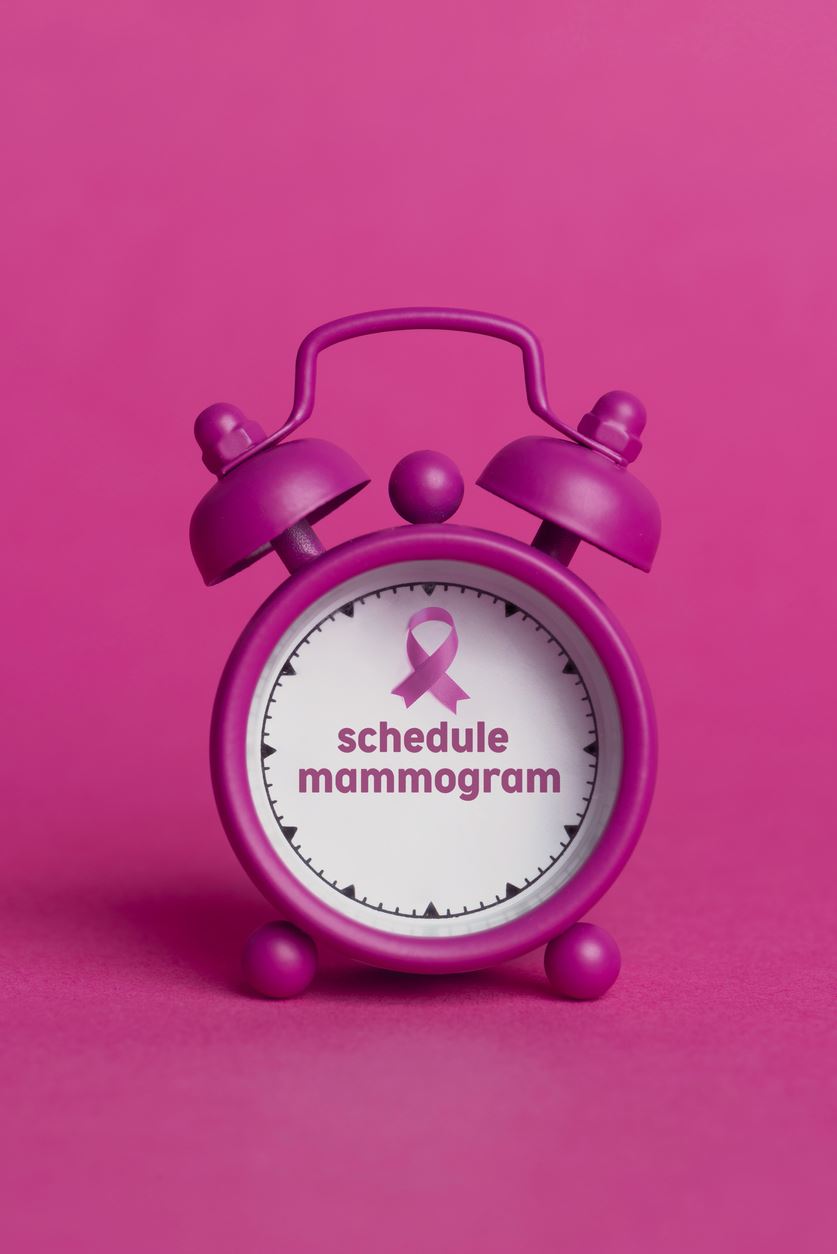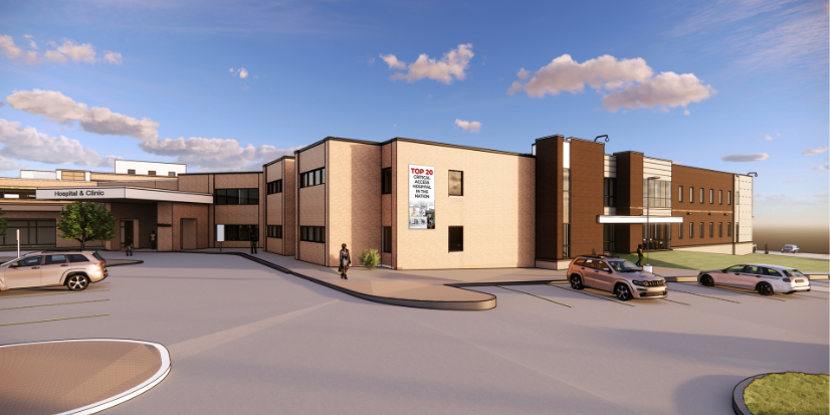The Importance of Annual Mammograms
- Posted On:
- Written By: Grace Wegner

Be the best you can be! Optimize your health and wellness by detecting breast cancer early through routine mammograms.
About 1 in 8 women in the United States will develop invasive breast cancer throughout their lifetime, according to the American Cancer Society. While there are many methods for self-exams a person can do at home, the most effective way to catch breast cancer early is through mammograms. Mammograms remain the most crucial tool for diagnosing breast cancer in its earliest stages for most women. They are one of the easiest steps women can take to be preventative, yet many women neglect scheduling annual mammogram appointments or even avoid them altogether.
October is National Breast Cancer Awareness Month! To mark this event, Myrtue Medical Center would like to highlight the importance of yearly mammograms with the hope of encouraging women to schedule a breast exam today.
What is a Mammogram?
A mammogram is an x-ray image of the breasts using a low dose of radiation. The breast tissue can be viewed from many angles, making it easier to detect lumps or abnormalities within the breast tissue that may not be noticeable during self-examination.
What Happens During a Mammogram?
During a mammogram, a woman's breast is carefully positioned in a specialized machine that compresses the breast tissue between two plates. The breasts are compressed in order to create a clearer image for the x-ray. After the images are produced, they are saved on a computer where the radiologist and your doctor can view and examine them. Abnormal breast tissue will appear brighter and whiter than the surrounding area on the x-ray.
“A mammogram can be uncomfortable, but they are not painful,” stated a recent patient. “The few moments of discomfort are worth it for the peace of mind that comes with knowing you are taking care of your health. So, breathe through the discomfort, remind yourself of the importance of early detection, and know that you are taking an important step in your self-care journey.”
At Myrtue Medical Center, our Diagnostic Imaging team uses 3-D mammography. Also known as tomosynthesis, 3-D mammography is the newest technology currently accessible in breast imaging. Because the breast can be viewed in a cross-sectional manner, 3-D mammography proves to be a highly effective tool for detecting breast cancer.

Who Should Have a Mammogram?
All women should have mammograms. Research has indicated that breast cancer has a tendency to be more aggressive in women aged 40-50. Because of this, experts encourage a baseline mammogram between the ages of 35 and 39. Starting at age 40, women are encouraged to have a mammogram every year, especially women who have risk factors for breast cancer. If you have a family history of breast, ovarian or other cancers, you may have to have a mammogram earlier than age 40.
Breast cancer risk factors:
- Age — our risk for breast cancer increases with age
- Personal history of breast cancer or other cancers
- Family history of breast cancer
- Menstrual period beginning at an early age — prior to age 12
- First pregnancy after age 30
- Having no pregnancies at all
- Obesity and alcohol use
- Estrogen/Hormone therapy
- Dense breast tissue
A great majority of breast cancer patients, approximately 75 percent, have no risk factors. This statistic emphasizes the significance of yearly screening mammograms for all women.
Men and Breast Cancer
Although breast cancer is most commonly found in women, men can get breast cancer too. In fact, men account for about 1 in 100 breast cancer diagnoses in the United States. The most common symptoms for men with breast cancer are the following: a lump or swelling in the breast, flaky or red breast skim, irritation of breast skin, nipple discharge, or pain in the nipple area.
For men, the following factors can increase their chance of getting breast cancer:
- Age — the risk for breast cancer increases with age
- Genetic mutations
- Family history of breast cancer
- Radiation therapy treatment
- Hormone therapy treatment
- Klinefelter syndrome
- Certain conditions that affect the testicles — injury to, swelling of, or surgery to remove the testicles can increase breast cancer risk
- Liver disease — scarring of the liver can lower androgen levels and increase estrogen levels in men, increasing the risk of breast cancer
- Obesity and overweight
The Importance of Annual Mammograms
Mammograms save lives. Having yearly mammograms is the most effective method for detecting and reducing the risks of breast cancer. Regular mammograms offer numerous benefits, such as:
- They detect breast cancer early, in certain cases as much as a few years before you can feel it
- They reduce your risk of death from breast cancer by 30%
- Early detection equivalates a better prognosis and less extensive treatments
- Early detection might mean keeping your breasts rather than resorting to a mastectomy
- They give your doctor a continuing record of your breasts, which can be utilized for future side-by-side comparisons.
Now that you know the importance of annual mammograms, the time for action is now! At Myrtue Medical Center, our Diagnostic Imaging team is here for you. With our most up-to-date 3D technology and friendly faces, you can feel confident that your screening is as precise as possible.
Contact us at 712.755.4516 to schedule your mammogram today! If you have an account with MyChart you can schedule your mammogram directly online—when it’s convenient for you! Visit www.myrtuemedical.org and click on MyChart Patient Portal.
Today and every day, we support the fighters, admire the survivors, honor the taken, and never, ever give up.
Be the best you can be! Optimize your health and detect breast cancer early through routine mammograms.


